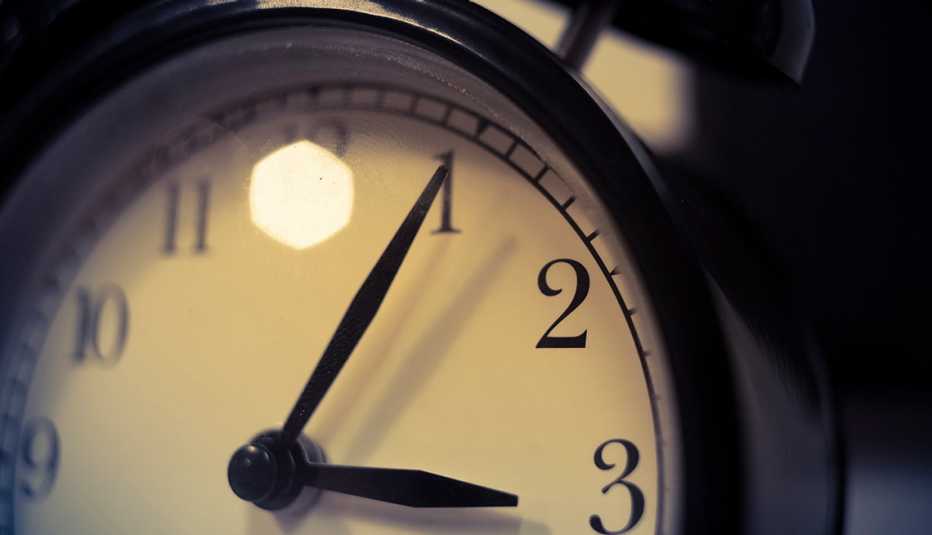They often find themselves wide awake an hour earlier than normal.
To help ease the transition, Drerup recommends changing your clock on Saturday night and pushing your bedtime back, rather than going to bed at your regular time.
If it’s difficult to stay awake, try doing something active, such as taking an evening stroll, rather than sitting on the couch and watching television, Drerup suggests.
See more Insurance offers >
2. Gradually adjust your bedtime
To make the transition less abrupt for your body, try to go to bed 15 to 20 minutes later each day for a few days leading up to the clock rollback, suggests Rachel Ziegler, a sleep-medicine physician at the Mayo Clinic Health System.
Adds Shalini Paruthi, a board-certified sleep-medicine specialist and codirector of the St. Luke’s Sleep Medicine and Research Center in St. Louis: “You should also begin to adjust the timing of other daily routines that are ‘time cues’ for your body, like meals and exercise.”
3. Get outside
Many Americans, especially those who work in an office all day, spend little time in daylight after the fall time change because of the earlier sunset. “They may be leaving work when it’s dark, going to work when it’s dark — so they’re getting no light exposure,” Drerup says.
Sunlight tells our circadian rhythms when we’re supposed to be tired and when we’re supposed to be awake, Ziegler says. So try getting some exposure first thing in the morning.
“Sunlight helps reset your internal clock,” she says.
Light exposure has also been shown to improve the quality of your sleep and boost your mood. If you can’t go outside, get to a window or try a light therapy box.
4. Maintain good sleep hygiene
Try to go to bed and wake up at roughly the same time every day, and avoid any extra dozing before bedtime.
Keep your bedroom dark, quiet and cool. Limit your use of both alcohol and electronic devices before bed, and adopt a calming bedtime routine.
Sunlight helps reset your internal clock.
—Rachel Ziegler, Mayo Clinic
“A good bedtime routine includes doing the exact same activities in the exact same order every night,” Paruthi advises. “Most successful bedtime routines are 15 to 30 minutes long. They help transition the brain from a go-go-go mindset to a more calm one, so you can relax and get some sleep.”
5. Get moving
Make the most of the light in the morning and use that extra hour for a morning workout, Ziegler suggests.
If you can’t exercise in the morning, it’s still a good idea to incorporate some activity into your day.
“Exercise has been shown in studies to improve sleep quality,” Paruthi explains. “It’s recommended that we get at least 150 minutes of movement or exercise per week, which could be as simple as walking 30 minutes, five days a week.”
6. Block out light
If sunrise wakes you up too early after the clock change, install some blackout curtains. Even easier: don a sleep mask.
Your eyelids alone can’t block out all of the light, research shows. In fact, the latest research shows that sleeping in total darkness could do more than just help your sleep; it may also boost your cardiovascular and cognitive health.
7. Try not to stress
Drerup urges people to try not to worry too much about the time change.
“Worrying about it actually just makes it worse for a lot of people,” she says. “You may feel a little off for a couple of days, but most people who don’t have chronic insomnia or a sleep disorder do pretty well.”
Video: Find Your Best Sleep Position
Editor's note: This story, originally published March 12, 2021, has been updated to include additional reporting from Michelle Crouch.







































































More From AARP
The Science of Sounder Sleep
Why you may be tossing and turning like never before — and how research shows you can change thatBuild a Better Bedroom
Make your bedroom say 'serene retreat,' not 'time to sort piles of laundry'
More Sleep May Be Critical for Those With High Blood Pressure and Diabetes
A new study shows how less than 6 hours can raise heart attack, stroke and cancer risk